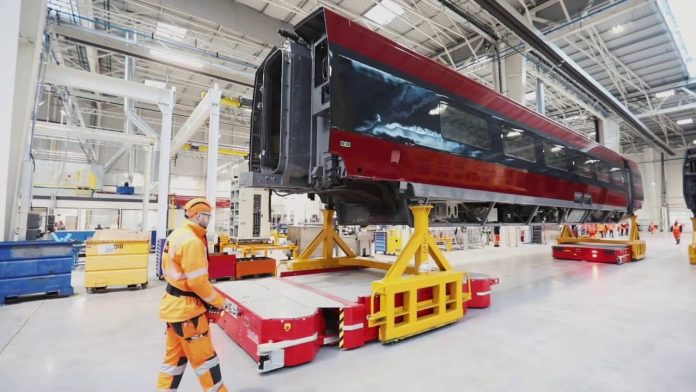French rail company SNCF, in partnership with Orange and Nokia, has extended a state-sponsored industrial 5G testbed utilising the 26 GHz millimeter wave band at a train station Rennes, in the northwest of France, to two new industrial complexes in the city. The strategy is to go beyond testing of 5G use cases for rail commuters to address industrial maintenance cases for rolling stock. Separately, Orange and Nokia have expanded their private 5G setup with Schneider Electric in nearby Normandy to include LTE and 5G slicing.
The initial testbed at Rennes train station, a co-creation initiative arising from a call by French regulator Arcep for innovative 5G platforms, has been live for 18 months, and has proved 5G in millimeter wave frequency offers fibre-like data speeds to support sundry use cases for public rail users, including media streaming and video-conferencing. The initial scope also included support for augmented reality (AR) apps for maintenance staff.
The extended project, which has won further government funding support, will bring a couple of local rail ‘technicentres’ — dedicated alternatively to maintenance of brake parts for all SNCF trains in France and for cleaning and repairs — into the testbed zone, stretching the coverage area to 22 hectares. A statement said the project will “accelerate switchover to very high-speed wireless for industrial entities of the SNCF group”.
The network goes live in a couple of weeks. Use cases have already been lined up; these include testing download speeds for operational data, real-time connectivity for process control, remote control of ‘trolleys logistics’, ‘nomadic cameras’ to follow the movement of equipment, and analysis of real-time videos to help identify graffiti or hatches left open at the end of the maintenance cycle.
Orange and Nokia are providing ‘network services’ and ‘technology solutions’, respectively. The latter’s remit covers private 5G setups. The Mines-Telecom Institute, a public engineering institution, is looking at “concepts of trust and sovereignty… and more particularly the problem of [edge-cloud] data hosting”. Like with the first phase, which also saw involvement from Qualcomm, Sony, and Lenovo, the new phase is open to third parties to “enrich use cases”.
Christophe Fanichet, deputy chief executive for digital at SNCF, said: “This new stage of experimentation… is strategic because it paves the way for innovations that can be decisive and give us an advantage, particularly for the reliability and competitiveness of our maintenance.”
Matthieu Bourguignon, vice president of enterprise sales in Europe for Nokia, said: “5G will be the foundation of Industry 4.0 and it is essential to develop use cases to accelerate adoption of this technology. 5G is also a technology essential for the development of territories and it is a guarantee of their competitiveness at scale national, European and global, thanks to the innovations it supports.”
Michaël Trabbia, executive director for technologies and innovation of Orange, said: “We are convinced of the potential of 5G for industry… This innovative project allows us to test the use cases and performance of 5G in the 26 GHz band. This band of frequencies is particularly suitable for additional very localized deployments in areas requiring a very high capacity, such as industrial sites or places with very high affluence.”
Meanwhile, Nokia and Orange have extended work on France’s first industrial 5G network at a Schneider Electric plant in Le Vaudreuil, in Normandy, first announced at the back-end of 2020. Specifically, the pair have introduced network slicing to enable closer management of quality-of-service and security for Industry 4.0 processes, operations, and applications. Orange recruited Nokia for the project.
The Finnish vendor is offering slicing on both LTE and 5G networks. It has announced deals previously with A1 in Austria and Telia in Sweden to test slicing in their public macro networks. These firms are providing slices for enterprises in the rail, shipping, aviation, and oil and gas sectors. It claims a number of non-public references, alongside. The work with Schneider Electric brings “slice continuity” between its private LTE and 5G network architecture.
Arnaud Vamparys, senior vice president or radio networks at Orange, said: “Thanks to Nokia’s advanced slicing technology, Orange is able to further explore with Schneider Electric the power of scalable private 4G/5G connectivity applied to industrial uses.”
Tommi Uitto, President of Mobile Networks at Nokia, said: “With Nokia’s network slicing solution, Communication Service Providers and Enterprises can enjoy first to market advantage through the early launch of new slicing services, for all end-users equipped with 4G or 5G devices. As a long time innovation partner, Nokia is delighted to achieve this first with Orange in an industrial manufacturing environment.”

